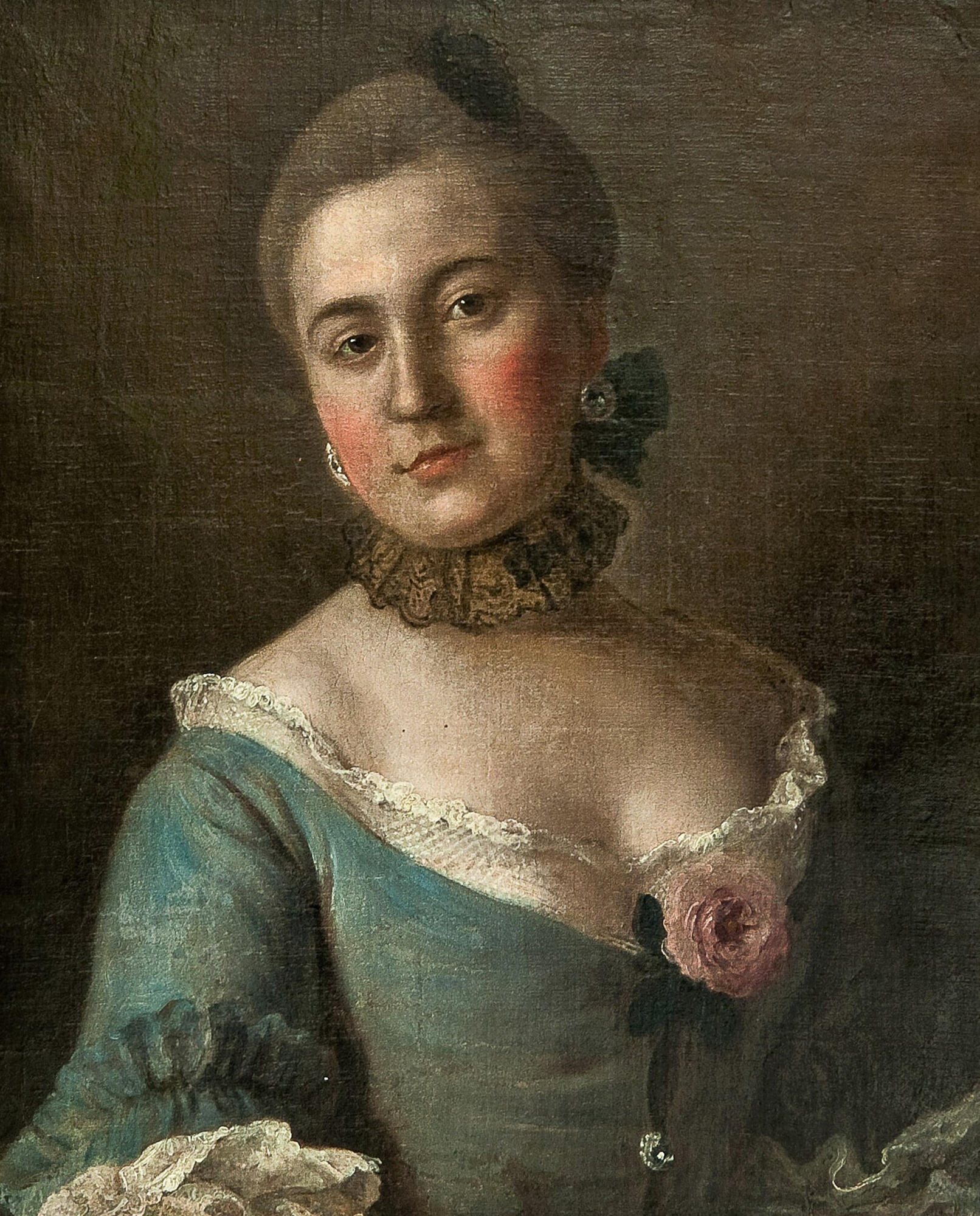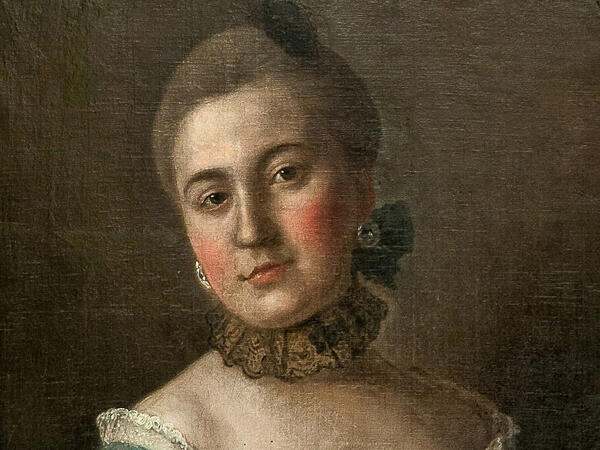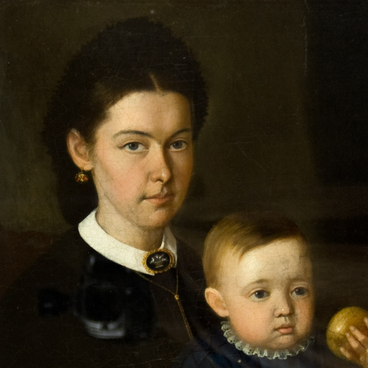The portrait of Princess Elena Kurakina was created in the studio of the Italian painter Pietro Antonio Rotari in St. Petersburg. In 1756, after receiving an invitation from Empress Elizabeth Petrovna to work at the Russian Imperial Court, the artist moved to the capital city of the Russian Empire.
Due to having an elegant and idealized style of painting, which is sometimes described as ‘complimentary’, the artist quickly gained popularity among Russian people. Rotari created a new painting genre—a typological head study, which can be translated from the Italian ‘teste di carattere’ as ‘character heads’. Rotari called such works ‘passioni’, which means ‘passion, mood’ in Italian. And since they were mainly Bust-Length and Shoulder-Length images of women, they were also called ‘heads’ by Russians. In 1760, Elizabeth Petrovna purchased 50 of Rotari’s works painted in this genre depicting women in national costumes; and after his death, Catherine II bought all the paintings left in the artist’s studio that was left with his wife.
Rotari was also a successful teacher. Among his students were the famous portrait artists Fyodor (Fedor) Rokotov and Ivan Argunov.
The portrait of Princess Kurakina displayed at the exhibition was painted by one of Rotari’s students—a Russian artist whose identity is unknown. Elena Kurakina was the daughter of the Field-Marshal-General Stepan Apraksin. In 1751, she married the Hofmeister and Senator Boris–Leonty Alexandrovich Kurakin, and after a while, she became one of the royal mistresses of Emperor Peter III of Russia.
The princess was considered one of the most beautiful women at the Imperial Court. Those who knew her remembered her as someone who “had dark hair and fair skin, was exceptionally beautiful, was frivolous, and had spirited vigor of manner and wit; and also had an eye for fashion.” Kurakina’s life was rather short: she died in 1768 at the age of 33 and was buried at Lazarevskoye Cemetery of Saint Alexander Nevsky Lavra (Saint Alexander Nevsky Monastery).
The experts believe that the portrait of the princess was originally located in her son Alexander Kurakin’s mansion, in the village of Nadezhdino of the Saratov Governorate. The prince owned an expensive art gallery. His descendants sold his whole collection, and the portrait became part of the collection of Nina Arning-Zaitseva, the widowed wife of Kazimir Arning, an art collector. In 1980, she donated the painting to the Volgograd Museum of Fine Arts named after I.I. Mashkov.
Due to having an elegant and idealized style of painting, which is sometimes described as ‘complimentary’, the artist quickly gained popularity among Russian people. Rotari created a new painting genre—a typological head study, which can be translated from the Italian ‘teste di carattere’ as ‘character heads’. Rotari called such works ‘passioni’, which means ‘passion, mood’ in Italian. And since they were mainly Bust-Length and Shoulder-Length images of women, they were also called ‘heads’ by Russians. In 1760, Elizabeth Petrovna purchased 50 of Rotari’s works painted in this genre depicting women in national costumes; and after his death, Catherine II bought all the paintings left in the artist’s studio that was left with his wife.
Rotari was also a successful teacher. Among his students were the famous portrait artists Fyodor (Fedor) Rokotov and Ivan Argunov.
The portrait of Princess Kurakina displayed at the exhibition was painted by one of Rotari’s students—a Russian artist whose identity is unknown. Elena Kurakina was the daughter of the Field-Marshal-General Stepan Apraksin. In 1751, she married the Hofmeister and Senator Boris–Leonty Alexandrovich Kurakin, and after a while, she became one of the royal mistresses of Emperor Peter III of Russia.
The princess was considered one of the most beautiful women at the Imperial Court. Those who knew her remembered her as someone who “had dark hair and fair skin, was exceptionally beautiful, was frivolous, and had spirited vigor of manner and wit; and also had an eye for fashion.” Kurakina’s life was rather short: she died in 1768 at the age of 33 and was buried at Lazarevskoye Cemetery of Saint Alexander Nevsky Lavra (Saint Alexander Nevsky Monastery).
The experts believe that the portrait of the princess was originally located in her son Alexander Kurakin’s mansion, in the village of Nadezhdino of the Saratov Governorate. The prince owned an expensive art gallery. His descendants sold his whole collection, and the portrait became part of the collection of Nina Arning-Zaitseva, the widowed wife of Kazimir Arning, an art collector. In 1980, she donated the painting to the Volgograd Museum of Fine Arts named after I.I. Mashkov.



